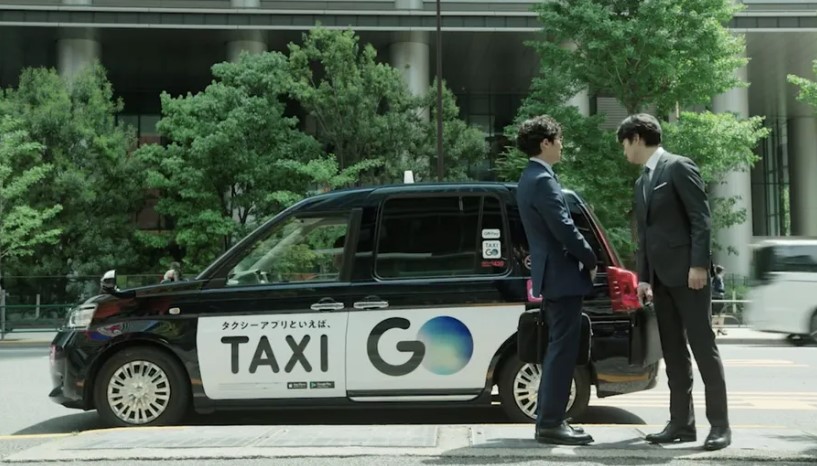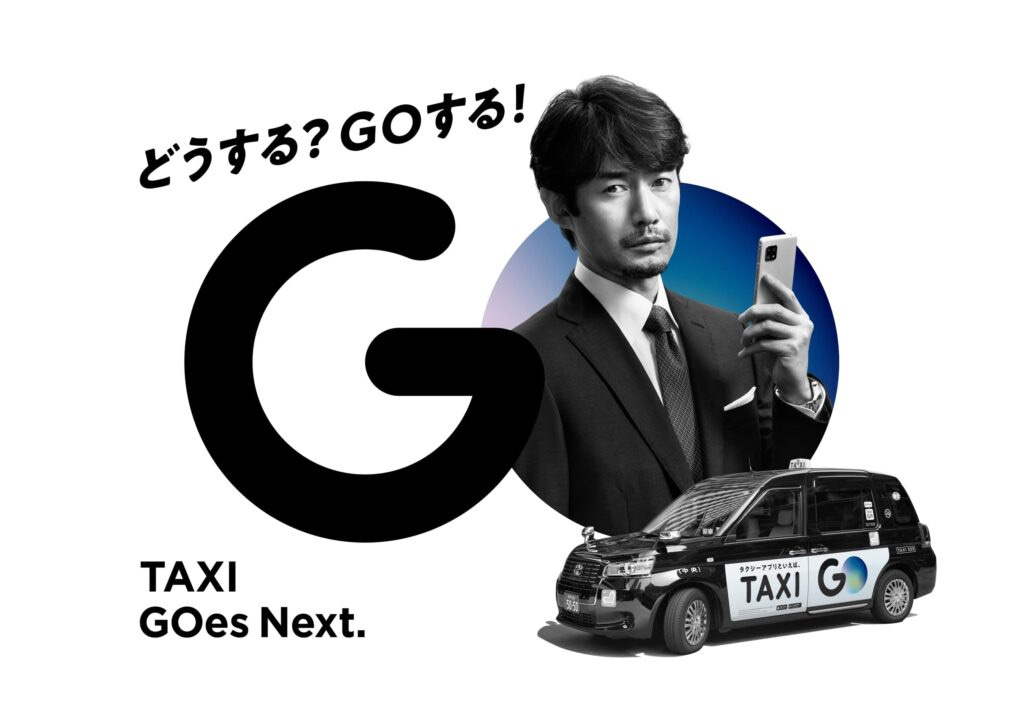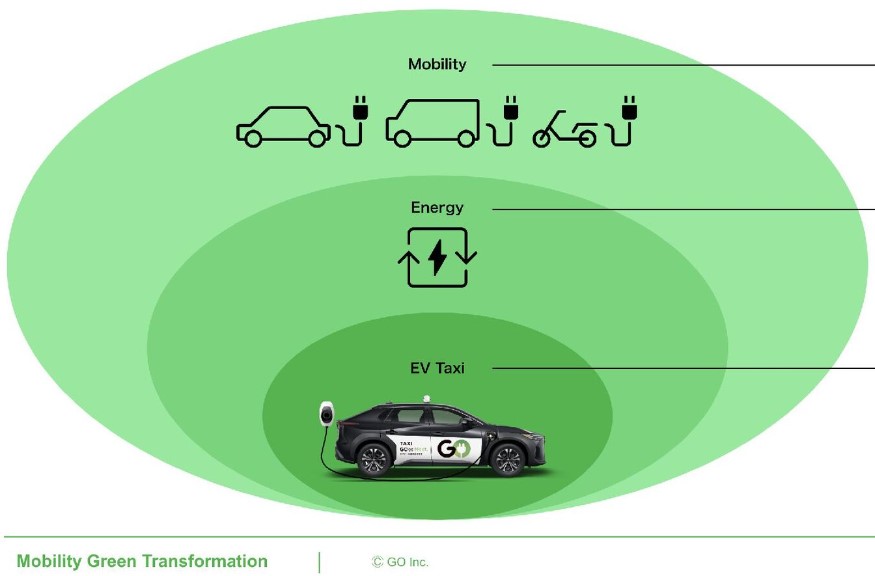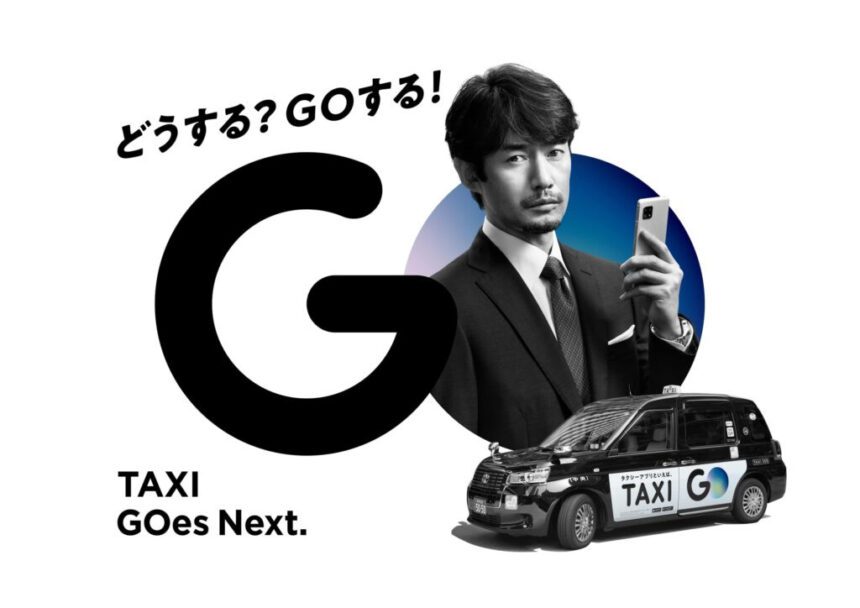Strolling around Ginza in Tokyo, I witnessed a bustling crowd of tourists, as if I had traveled back to the prosperous period of visiting Japan three years ago.

Today, I want to introduce “GO,” a company whose primary service is a ride-hailing app for taxis. Currently, its valuation has exceeded $700 million.
In this article, we will explore GO’s ride-hailing app and other major businesses, allowing everyone to get to know this Japanese unicorn.
📲GO’s Core Business: Ride-Hailing App
GO is most well-known for its ride-hailing app called “GO.” I’ve used it a few times and found it to be very convenient.
The main feature is the ability to book a taxi and even set the destination and complete the payment in advance within the app. This eliminates concerns about drivers taking longer routes to overcharge passengers and avoids the hassle of searching for cash in the wallet before getting off the taxi.

Unlike Uber, GO allows users to schedule rides in advance, which is extremely convenient for busy business professionals who value every second. The GO app has been downloaded over 10 million times and has gained great popularity.
The brand advertisement featuring Yutaka Takenouchi showcases scenarios of business professionals, and the memorable slogan “Taxi Goes Next” leaves a deep impression.

According to GO’s survey, the average wait time for a taxi when calling by phone is around 6.5 minutes, while using the GO app reduces it to just 3.4 minutes, significantly reducing the waiting time.
To operate a successful ride-hailing app, a large number of taxis are required. However, this is not a problem for GO because their parent company is Japan Taxi, a well-established taxi company that has been in business for 94 years. There’s a high chance that the taxis you see on the streets of Tokyo belong to them.
GO has raised over 240 Million USD in funding so far, and this only accounts for the publicly disclosed amounts, excluding undisclosed investment cases. According to INITIAL’s research data, GO’s valuation has exceeded 700 Million USD. Currently, it has not been listed, making it a unicorn company.
However, GO is actually different from the typical startups we would think of since its parent company has a long history. GO itself has also undergone several mergers and name changes. Let’s briefly introduce its evolution here.
- 2015: The company changed its name to Japan Taxi Corporation.
- 2016: Established IRIS Corporation in collaboration with Freak Out Inc. to operate taxi advertising services.
- April 2020: Japan Taxi merged with another ride-hailing app service called “MOV” and changed its name to Mobility Technologies.
- September 2020: The ride-hailing app “GO” was officially launched.
- April 2023: The company changed its name to GO Corporation.
Considering that its parent company is a taxi company, it’s not difficult to imagine that GO’s corporate philosophy and development strategies revolve around taxis. They not only focus on the ride-hailing app as their core business but also develop various services related to taxis.
GO Leading the Digital Transformation of Taxis🚖
GO’s main businesses are as follows:
GO App: Ride-hailing app for taxis GO Business: Corporate taxi service DRIVE CHART: AI dashcam Tokyo Prime: Taxi electronic advertising GO Dine: Taxi food delivery service We have introduced the ride-hailing app in the previous section, now let’s introduce the other four businesses.
In 2021, GO launched the SaaS “GO Business” specifically designed for corporate clients. In simple terms, it is the enterprise version of the GO App. The difference from the app is that companies can manage taxi booking and fare reimbursement in one place. This service currently has over 3,000 clients.
GO’s remarkable slogan : “____” GOES Next
For example, when an employee takes a taxi for a business trip, they have to pay the fare first and then collect the receipt for reimbursement. Whether it’s the employee or the accountant handling the travel expense reimbursement, they find this process troublesome, not to mention the possibility of employees forgetting or losing the receipts.
With GO Business, receipts can be digitized, and accountants don’t have to confirm them one by one. They can directly handle travel expense reimbursement, saving a lot of complex business operations.
Another B2B business of GO is the next-generation AI dashcam “DRIVE CHART,” which focuses on analyzing driving conditions using AI.
There have been many cases in Japan where truck drivers caused accidents due to fatigue driving, and many companies want to reduce accidents and take preventive measures. DRIVE CHART is a service created for this purpose.
Generally, dashcams are important evidence in case of accidents. However, the goal of DRIVE CHART is not to record accidents but to use AI to grasp driving conditions. When dangerous driving situations occur, such as sudden acceleration, sudden braking, or speeding, AI will automatically record and transmit the data to the cloud.
There are two advantages to doing this: first, in case of an accident, there is no need to remove the memory card. The recorded video can be instantly sent to the company. Second, even if there is no accident, the company can understand the drivers’ conditions, make regular improvements, and reduce the likelihood of traffic accidents.
Targeting High-Consumption Groups: Advertising and Food Delivery for Taxis🚚
Tokyo Prime, a subsidiary of GO, is Japan’s largest taxi advertising company, with a total of 66,000 cooperating taxis. It ranks first in Japan, with more than 25,000 taxis in Tokyo alone.
Regarding taxi advertising, this type of advertising targets high-consumption groups and executives, with ad prices ranging in several ten thousands of USD.
Tokyo Prime’s data also points out the characteristics of taxi passengers: the proportion of managerial positions, the proportion of luxury car owners, the tendency to purchase luxury brands, etc. The passenger groups who take taxis are much higher in consumption compared to those who don’t take taxis. In other words, those who take taxis are not only higher-consuming groups but also often the decision-makers in companies.
Therefore, advertising business software on taxis is indeed a very effective marketing method. Due to the clear target audience, the cost of taxi advertising in Japan is very high, often amounting to several ten thousands of USD.
Moreover, it’s not just about money; strict scrutiny is required. For example, Tokyo Prime explicitly states in its media materials that they do not accept advertising videos that appear cheap.
GO also has a service that I find particularly interesting: GO Dine. In a nutshell, it is a taxi food delivery service, which also targets high-consumption groups.
Unlike Uber Eats, GO Dine focuses on high-priced meals and collaborates with upscale traditional Japanese restaurants, Michelin-starred restaurants, etc. The meals are delivered to customers’ homes by taxi drivers, allowing them to enjoy the luxury and exquisite taste of high-end cuisine at home.
Checking the GO Dine official website, the prices are indeed high. For example, this birthday anniversary steak set for 2-3 people costs over 280 USD. In addition, the delivery fee by taxi is charged separately, starting at a minimum of 14 USD.

🔄Is the Name Change a Preparation for Going Public?
When Japanese companies change their names, they often share the intention behind the name change on their official website, as well as the expectations and visions associated with the new name. This reflects their emphasis on branding.
According to the GO official website, there are two reasons for the name change from Mobility Technologies to GO: first, the GO App has high brand recognition and is easy to remember, so the company decided to change its name to GO.
The second reason is to reshape the brand image. This time, they have adopted the slogan “Heading towards the Next Future GO” to declare their commitment to bringing more innovations to the field of mobility technology.
Specifically, GO’s vision goes beyond just the digital transformation of the taxi industry. It also includes reducing traffic accidents and promoting green energy transformation (GX), emphasizing the ESG perspective.
For example, President Hiroshi Nakajima announced his intention to promote the green energy transformation in the taxi industry, with a target of reducing 30,000 tons of carbon emissions by 2027.

Let’s make an irresponsible prediction: GO might announce its IPO in the near future.
Based on my observation, Japanese companies usually change their names under two circumstances: either due to mergers and acquisitions or in preparation for going public. Considering the recent surge in ESG-related news, it is evident that GO is increasingly focused on corporate image, indicating that they may be actively preparing for an IPO.


